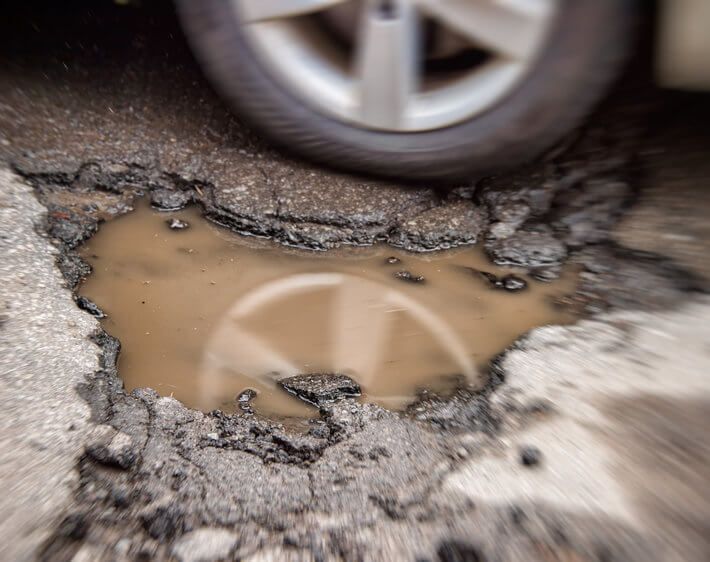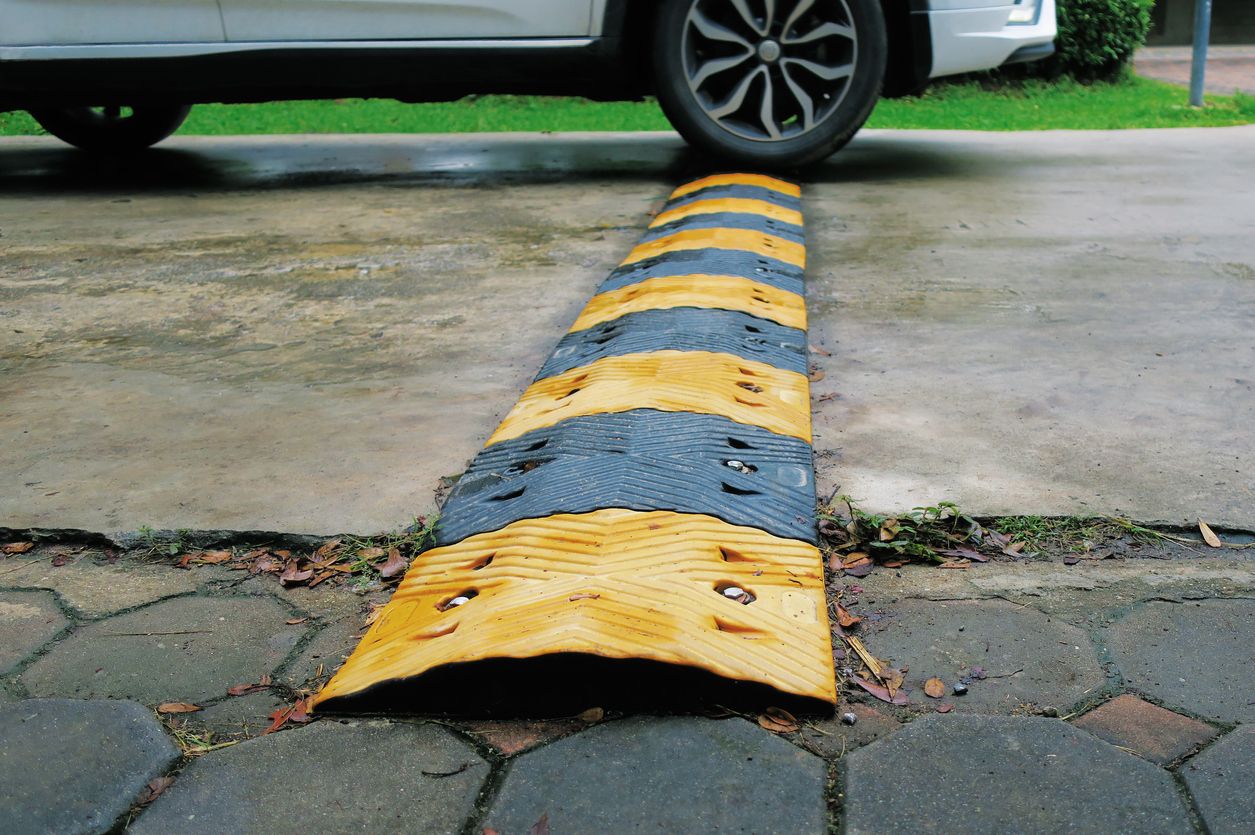Hitting a pothole is an unmistakable experience. The sudden dip. The violent jarring. The sound of the impact.
For all of the bone-rattling involved, though, pothole damage can also be really sneaky. You’ll notice a flat tire or bent rim right away. Some other problems, however, might take you a little longer to identify.
Pothole damage to your shocks and struts can be especially subtle at first. But such damage can grow into big, costly, and potentially dangerous issues. To help you watch for signs that your shocks or struts sustained pothole damage, check out this guide.
What are Potholes?
You're cruising down the road, wind in your hair, tunes blasting from the stereo, when suddenly, THUD! Your car hits what feels like the Grand Canyon of road imperfections – a pothole. But what exactly are these pesky pits that seem to materialize out of nowhere?
Potholes are depressions or holes in the pavement, and they're caused by a mix of factors. Changes in weather cause the ground beneath the pavement to shift and settle, creating cracks. When water seeps into these cracks and freezes, they expand, further weakening the pavement. The weight of passing vehicles exacerbates this damage, and as the ice melts and water dissipates, it leaves behind gaps — potholes — in the pavement.
These annoyances come in all shapes and sizes and can appear seemingly overnight, turning your peaceful drive into a real-life game of dodge-the-pothole.
Effects of Potholes on Your Vehicle
Running over a pothole can lead to a laundry list of issues for your vehicle. From damaged, bent, or broken components to premature wear of critical parts like shocks and struts, the aftermath of hitting a pothole can be quite the headache. Your tires, wheels, alignment, and even the body of your car can suffer from the impact.
6 Signs of Suspension Damage from a Pothole
So, how do you know if your vehicle's suspension system has taken a beating from a pothole? Here are some telltale signs of pothole suspension damage to watch out for:
1. Overcompensation
Does it seem like your steering wheel is pulling your vehicle to the left or right? Are you drifting when trying to maintain a straight line down the road? If so, it might be a sign that your car is attempting to make amends—or compensate—for an alignment problem created by pothole damage to your steering and suspension system.
So, if you've been wondering, "Can hitting a pothole mess up alignment?" the answer is yes!
2. Unusual Sounds
Following your pothole collision, has your vehicle started making new and unusual sounds? Clunking, rattling, or squeaking: things like that? If so, these sounds could indicate loose or damaged steering and suspension components.
3. Crouching During Braking
Does the vehicle demonstrate nosedive-like behavior when you apply the brakes? It might feel like the front end of your car dips down when you brake. This "crouching" motion can suggest worn-out shocks or struts that cannot effectively control your vehicle's movement.
4. Leaking Fluid
Another crucial indicator of potential suspension system damage is leaking fluids. Take a look at the ground beneath your vehicle for any telltale signs of fluid leaks, especially around the shocks and struts. Leaking fluid is a sure sign of a problem that needs addressing and could indicate pothole damage to your car’s suspension.
5. Rough Driving
A car that used to handle the road easily but now feels like a bucking bronco, with every bump and dip in the road, is perhaps calling out for pothole repair. You might also experience more bouncing than before, a side-to-side “body roll”, and/or the inability to regain stability quickly.
6. Uneven Tire Wear
Uneven tire wear can also be a red flag. Take a peek at your tires – if you notice unusual wear patterns or one tire wearing out faster than the other, this could be a sign of a misaligned steering system or damaged suspension system.
How to Minimize the Risk of Pothole Damage
While it's not always possible to avoid every pothole you might encounter on the road, there are steps you can take to potentially minimize damage to your vehicle:
- Stay Alert: Keep your eyes peeled for potholes ahead. Scan the road as far ahead as possible to spot them early and maneuver around them safely.
- Maintain Distance: Avoid tailgating other vehicles. Keeping a safe distance gives you more time to react to road obstructions like potholes and unexpected objects.
- Proper Tire Maintenance: Ensure your tires are properly inflated and have adequate tread depth. While this won't ensure that your vehicle won't sustain damage when driving over every pothole, your tires are your first line of defense against these obstructions. When they're well-maintained, they're better equipped to absorb the impact of potholes.
- Reduce Speed: Slow down when approaching potholes to reduce the force of impact. Gentle braking can also help minimize damage.
- Avoid Standing Water: Puddles can disguise potholes, making them harder to spot. To avoid lurking obstructions, safely steer clear of standing water whenever possible.
Stay on the Straight & Narrow with Firestone Complete Auto Care
Damage to your car's suspension is a safety issue, even when it's not obvious. This system plays a crucial role in maintaining stability, control, and comfort while driving. When compromised, it can no longer effectively absorb the impact of bumps and uneven surfaces. The potential result? Decreased vehicle handling, increased stopping distances, and loss of control, especially during emergency maneuvers or sudden braking. The excessive bouncing and swaying can also reduce tire grip on the road, compromising overall vehicle stability.
So, if running through this checklist helps confirm your suspicions that your vehicle may have sustained pothole damage. Schedule an appointment, and bring your car to your local Firestone Complete Auto Care for a suspension and alignment inspection to help keep your ride on the straight and narrow!



